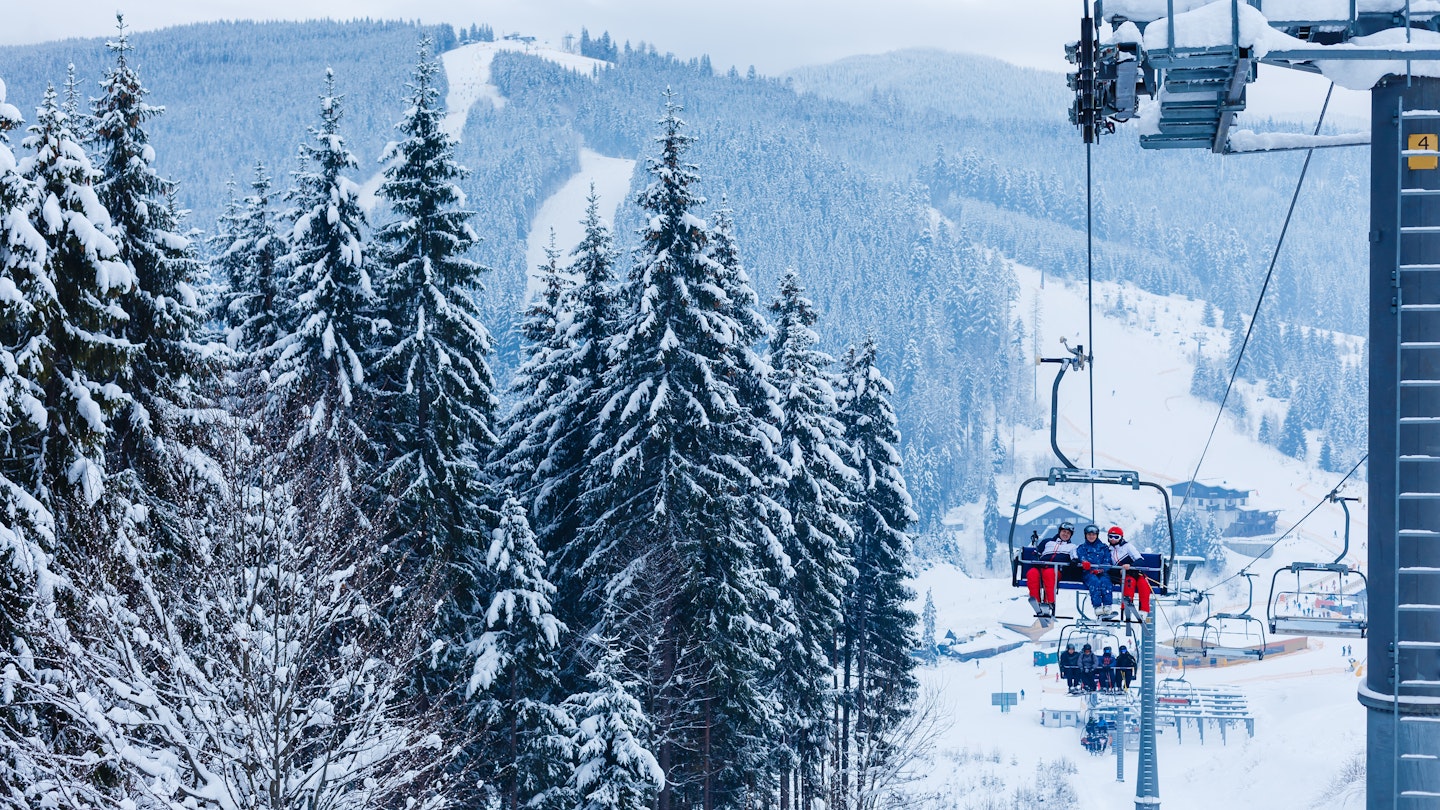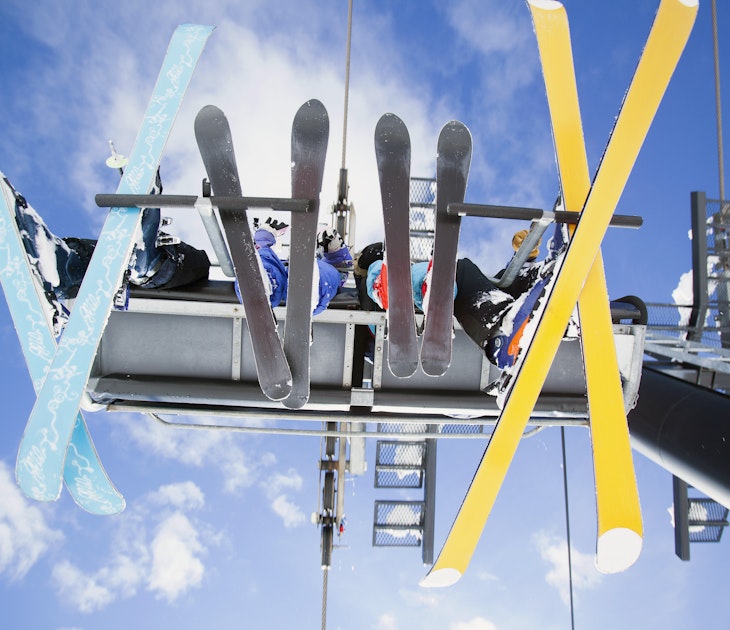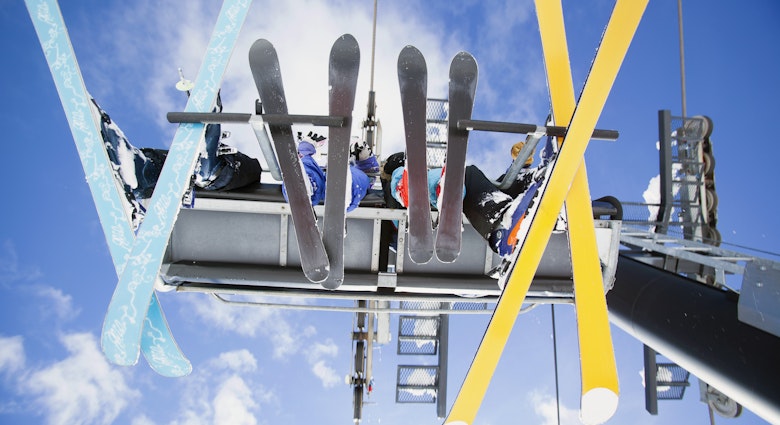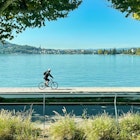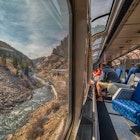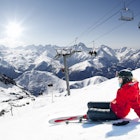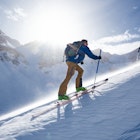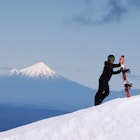As every skier knows, there is something more fearsome than even the iciest cliff face: the cost of a ski trip.
A week’s lift pass in major European resorts can cost around €300/$321USD, with some rising to even dizzier heights. Add flights, accommodation fees and the breathtaking prices for standard burgers and flat beer and it’s enough to send shivers down your spine. In a time of rising cots of living; is there even such thing as affordable European ski getaway?
We slalomed across Europe to seek out the snowy grail: well-sized ski areas where a high-season six-day lift pass costs less than €275/$294USD. Here are the top ski resorts in Europe for budget travelers this winter.

1. Borovets, Bulgaria
Best for: the party crowd
Borovets has been a winter playground since the late 19th century. Hemmed by evergreens, its 36 miles (58km) of mostly blue (beginner) and red (intermediate) runs weave beneath Bulgaria’s mightiest peak, Mt Musala, reaching a height of 8398ft (2560m).
For better or worse, Borovets can be a favorite among snow-bound stag (bachelor party) groups who thunder down its pistes before stamping their ski boots in bars and basement clubs. Follow them towards cheap beers, but beware of drink promos involving rakia (a potent fruit-based booze).
Cost of accommodations: Budget accommodations often involve boxy hotels or basic apartments, but it’s hard to fault a week’s stay in a double room for around €300.
High-season lift pass price: Around €178/$190USD for six days.
How to get to Borovets: The journey from the capital city Sofia is around 90 minutes, with various companies running transfer services starting at €30/$32USD (and no extra charge for ski carriage). Even cheaper is a bus to Samokov and then a shuttle.

2. Vogel, Slovenia
Best for: beautiful views
Beneath Slovenia’s mythic Mt Triglav, believed by early Slavs to be the home of a triple-headed deity, lies low-key Vogel Ski Resort. With 13 miles (22km) of blue and red pistes, it’s hardly one of Europe’s biggest resorts, nor is it reliably snow-sure: but Vogel’s a bargain, with unforgettable views of the Julian Alps.
After arrival, transport costs are zero if your guesthouse has signed up for the bus scheme across Bohinj Valley. Also free are beauty spots within close driving distance: Lake Bohinj (40 minutes) and ethereal Lake Bled (one hour), looking all the prettier under a dusting of snow.
Cost of accommodations: Some guesthouses shutter their doors for winter, but nightly rates in Ukanc, downhill of the ski lifts, skirt a budget-friendly €75/$80USD per double (with more options in Ribčev Laz).
High-season lift pass price: Around €188/$201USD for five days.
How to get to Vogel: Vogel is a 90-minute drive from Ljubljana Airport, or reduce costs with a train ride to Bohinjska Bistrica.

3. Sauze d’Oulx, Italy
Best for: intermediate skiers
Sprawling across the France-Italy border, the gargantuan 273-mile (440km) Via Lattea (Milky Way) ski area has sheltered, tree-lined runs galore. The lion’s share is on the Italian side, easily reached from Sauze d’Oulx. With two-thirds of posted areas rated red, this is prime terrain for intermediate skiers; and in a resort of this size, there’s always somewhere to see off the crowds.
Despite being a well-oiled machine of the winter sports industry, the core of Sauze d’Oulx village has kept its charm: cobblestoned and lined with trattorie pouring out Piedmont wine to accompany polenta with rabbit, deep-fried vegetables and other northern Italian fare.
Cost of accommodations: Self-catering apartments offer the best value, with week-long stays close to Clotes chair lift costing less than €600/$642USD.
High-season lift pass price: €212/$227USD for six days (Via Lattea Italian side).
How to get to Sauze d’Oulx: 90-minute private transfers from Turin Airport to Sauze d’Oulx cost around €40/$42USD. Halve that with a bus to Porta Nuova followed by a train to Oulx station.
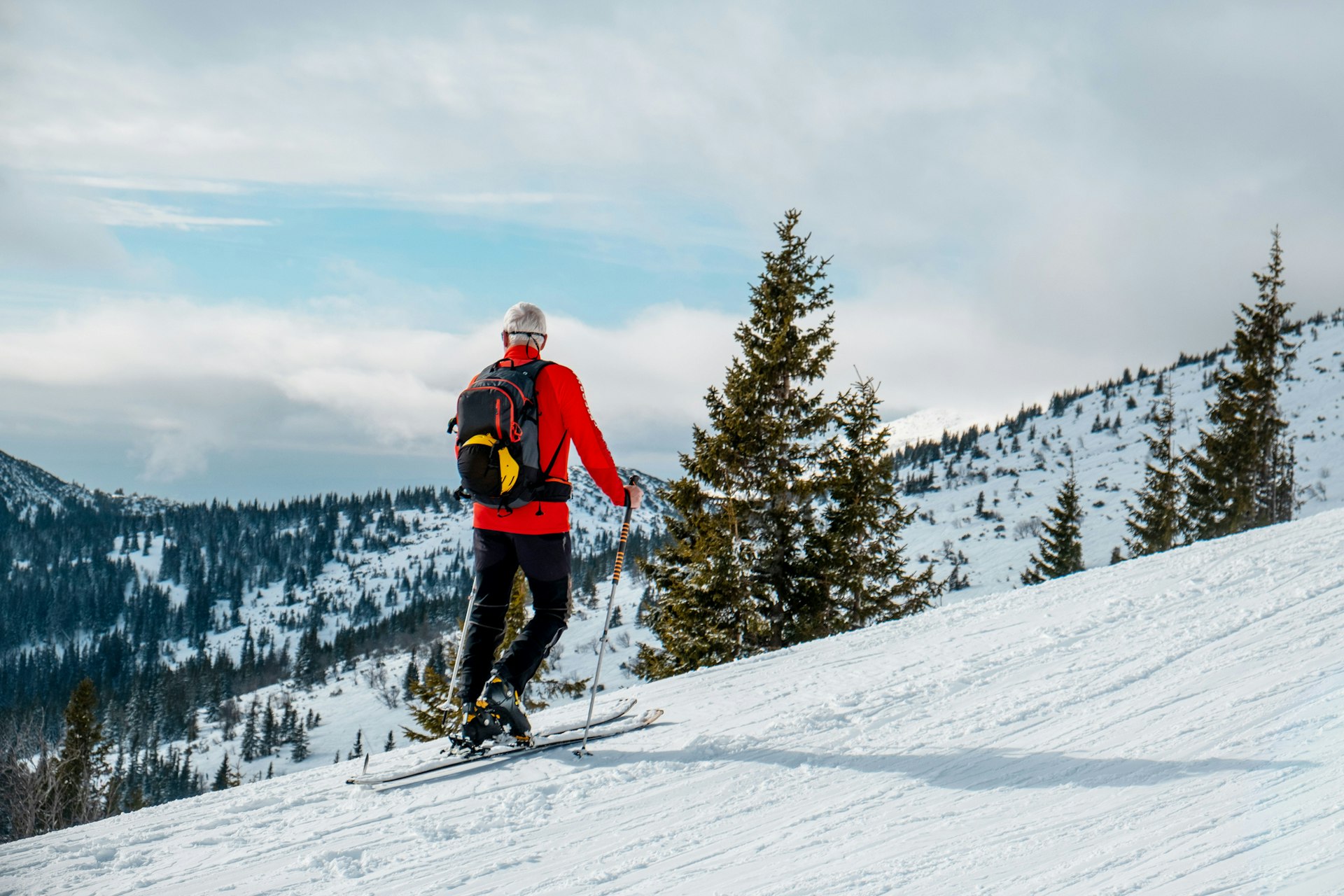
4. Jasná Nízke Tatry, Slovakia
Best for: night skiing
Slovakia’s largest ski resort has high peaks and low prices. Jasná is a 30-mile (49km) spider web of pistes astride Mt Chopok (6640ft/2024m), with around 20 speedy lifts, snow-making across more than half its area, a freeride zone and night skiing.
Jasná’s also at the heart of Slovak highland culture, which means fireside yarns about folk heroes accompanied by hearty shepherd cuisine. The latter adapts well to the budget skier’s table: a whopping serving of national dish bryndzové halušky (gnocchi-sized dumplings with sheep’s cheese and bacon) leaves enough change from a €10 note for a couple of Zlatý Bažant beers.
For more mountain magic, Vlkolínec, a fairy-tale 14th-century hamlet roosting on a hillside, is only 45 minutes away.
Cost of accommodations: Double rooms in Jasná start from €100 per night.
High-season lift pass price: Prices start at €154/$165USD for six days (via Gopass; €274/$293USD with night skiing).
How to get to Jasná: Budget flights reach Poprad-Tatry Airport, which is less than an hour’s drive away. Direct transfer by private car can cost from €30 per person. Alternatively, a taxi, train and bus combo (via Liptovský Mikuláš) costs less than €10.

5. Boí Taüll, Spain
Best for: après-ski culture
Boí Taüll towers at 6626ft (2020m) above sea level... and that’s its lowest point. Some of the Pyrenees’ highest pistes are here, draped across a resort that’s crowd-free, family-friendly and north-facing – crucial for long-lasting snow.
Once you’re in, this is a sweet ski area with 28 miles (45km) of mostly red and black (advanced) trails. Off the slopes, Catalan warmers like spiced snails and trinxat (potato-cabbage hash) fend off the cold, while a chocolate-oozing crepe from Ca la Pepa makes for a delectable low-cost dessert. The region’s architectural riches also buoy the selection of budget après-ski activities on offer, with visitors able to spend lazy afternoons ogling world-famous frescoes in the Vall de Boí’s nine Unesco-listed Romanesque churches.
Cost of accommodations: Move fast to secure an apartment or hostel for less than €450/$482USD a week.
High-season lift pass price: €228/£244USD per six days.
How to get to Boí Taüll: By road, it’s quicker from Toulouse-Blagnac than from Girona or Barcelona-El Prat airports. Change buses in Vielha to reach Taüll.

6. Białka Tatrzańska, Poland
Best for: beginners
Poland’s biggest winter sports resort, Białka Tatrzańska, is a concoction of beginner ski terrain, country hospitality and views of the Carpathian Mountains. Kotelnica, Bania and Kaniówka form one interconnected ski area (11 miles/18km in all) that’s ideal for skiers still finding their feet. Once confident, the same lift pass grants access to neighboring resorts where harder challenges await. For the perfect après-ski treat go to Terma Bania for toasty-warm outdoor bathing with views of the Tatras.
Cost of accommodations: Private rooms, often dressed with wood-carved furniture and grandmotherly lace, are a snip at around €40/£42USD, usually including a monster breakfast. Speaking of food, traditional Polish pierogi (dumplings) and żurek (sour soup) cost less than €4/$4.28USD, and shots of Żubrówka (bison grass-infused rye vodka) are generously free-poured.
High-season lift pass price: €128/$137USD for six days for the multi-resort Tatry Super Ski Pass.
How to get to Białka Tatrzańska: Private transfers from Kraków Airport are good value for groups (around €105/$112USD for four people) while public buses from Kraków Główny train station (two hours) are great value (around €8/$8.60USD).
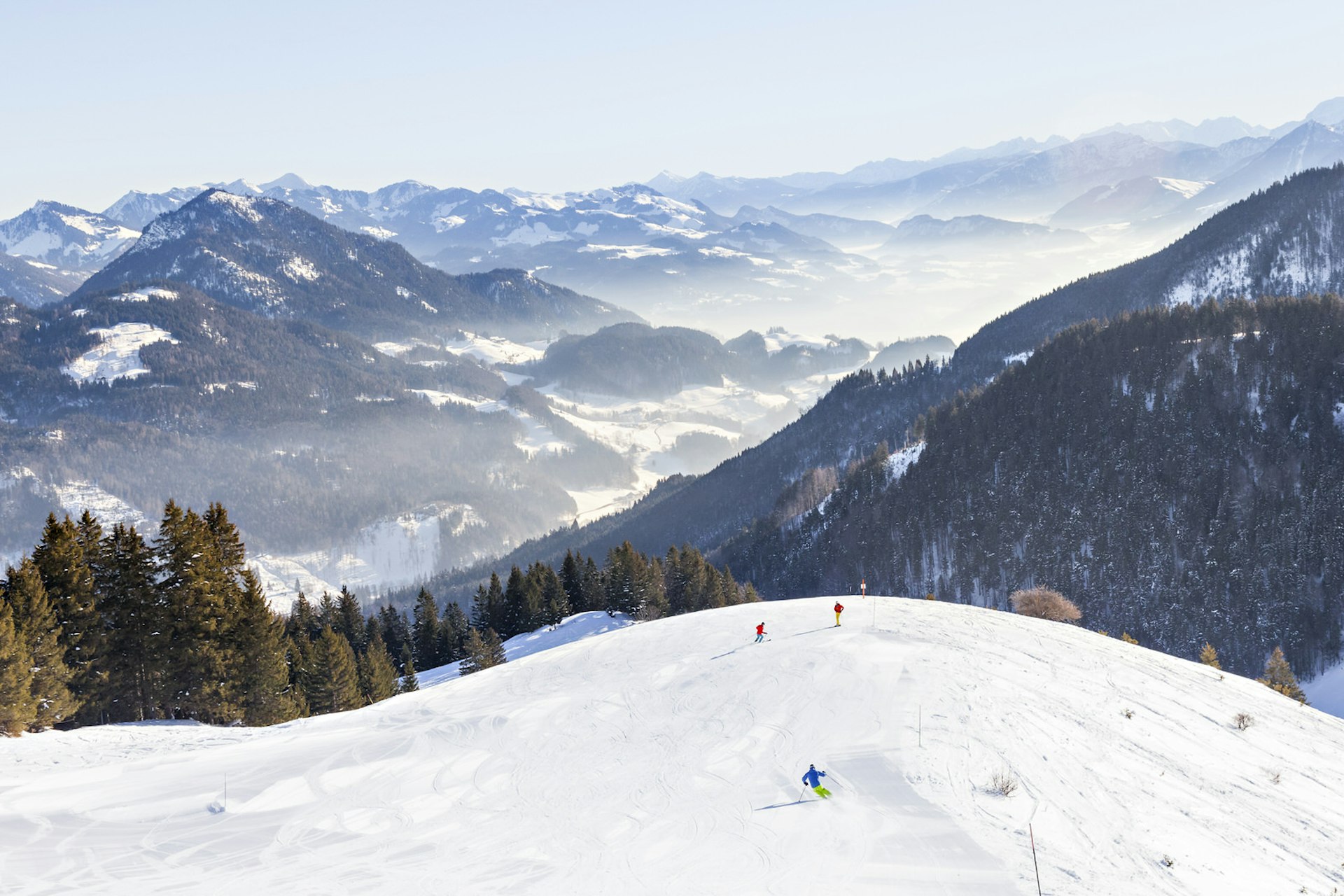
7. Sudelfeld–Bayrischzell, Germany
Best for: experienced skiers
Compared to expansive resorts in neighboring Austria, 19-mile (31km) Sudelfeld–Bayrischzell is modest – but so are its prices. There is extensive use of snow canons throughout the season, giving skiers access to a swathe of exciting red runs and a freeride area that’s ideal for experienced riders. Meaty Bavarian dishes aren’t always cheap, but low-cost mainstays like currywurst and flammkuchen (baked flat-breads slathered in sour cream and onions) will keep you full and leave funds for sampling a stein or two of Weissbier.
Cost of accommodations: A week’s stay in a snug guesthouse will set you back €550/$589USD (a significant saving on the big-name cross-border resorts). Those wanting to slash costs further can opt for dormitory-style accommodations, such as that found at Jugendherberge, where bed and breakfast comes in at an incredible €25/$26.70USD a night.
High-season lift pass price: Around €260/$278USD per six days.
How to get to Sudelfeld–Bayrischzell: From well-connected München Hauptbahnhof there are regular trains (€27/$29USD, 90 minutes) to Bayrischzell.

8. Val Cenis, France
Best for: long blue runs
Who needs Val d’Isère’s glamorous ski scene when the French Alps can be yours for a très petit price tag? The five villages of Val Cenis access 78 miles (125km) of velvety trails. Beginners can roam far, with blue runs extending from village level to the top of the resort – a sky-scraping 9186ft (2800m) in altitude – plus there are abundant red and a handful of black runs. You’re also a mere schuss from the Italian border, meaning authentic pizza at moderate prices – what more could you ask for?
Cost of accommodations: Apartments that sleep four to six people regularly go for €550/$589USD per week; per person, those are hostel rates for a balcony view of the Alps.
High-season lift pass price: From €227/$227USD for six days.
How to get to Val Cenis: Turin, Grenoble and Chambéry airports are all less than two hours away. By public transport, TGV (fast train) hub Modane is a 45-minute bus ride from the valley (from €13.50/$14.46USD).

